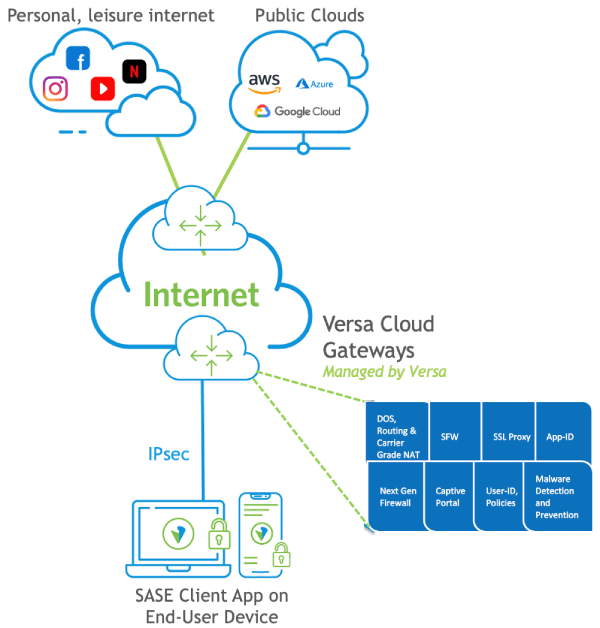
As the modern, digital world expands with an increase in mobile workers, device types, remote sites, and cloud applications and services, cyberattacks continue to get more sophisticated. Cyberattacks have been ranked as the fastest growing crime in the US. Similarly, from a global perspective, cybercrime damages are expected to reach $6 Trillion by 2021 and $10.5 Trillion by 20251. It comes as no surprise that security and compliance is always a top priority for organizations of all sizes. Security and data breaches are extremely costly to deal with and can significantly impact the bottom-line of any organization.
For networking and security professionals, keeping an organization’s users, devices, and critical applications constantly secure remains a daunting challenge as cyberthreats incessantly evolve to be more intelligent and pervasive. It also doesn’t help that traditional solutions – solutions that were once more than capable – no longer suffice at addressing the problem of advanced cyberattacks and a dispersed, perimeter-less network.
Furthermore, organizations are rapidly adopting more cloud-based solutions – relying on the internet to access cloud applications and services like Office365, Salesforce, Box, Google apps, etc. Securing users who access these assets and sensitive data shared over these cloud services is crucial yet becomes increasingly complex to do.
Secure Web Gateway (SWG), one of the major services of Secure Access Service Edge (SASE) is key to protecting users from web-based threats while applying and enforcing security policies consistently. While Secure Web Gateway has been around for quite some time, it has traditionally been offered as an on-premises solution. The problem with on-premises SWGs is that they are challenging and require time and specialized resources to deploy, configure, and manage. Additionally, with on-premises SWG, IT teams lack visibility, analytics, and control over their mobile users and cloud applications.
Luckily, the next generation of Secure Web Gateways is now offered as a service, delivered via the cloud, providing organizations secure connectivity, web access control, and user and application protection from potential threats on the web, regardless of location. As users connect to the public internet, accessing websites for work and leisure, Secure Web Gateway is able to help organizations:

Secure Web Gateway is a service that sits on a user’s device. Whenever a user surfs the internet, instead of the user connecting directly to a website, the user will be accessing an SWG. The SWG will then perform a range of security functions in order to protect the user from any potential web threats. Some of these functions may include URL and content filtering, deep SSL/TLS inspection, malware prevention, application control, user authentication, and more. While there is a multitude of functions being performed simultaneously by the SWG, all this activity is unseen by the user and doesn’t create any disruption or latency to the user experience.
From defending against threats, preventing data leakage on the web, protecting mobile workers, controlling and authorized user access, and providing granular real-time web traffic analytics, Secure Web Gateway is an important security solution that organizations should consider implementing as they begin their SASE journey.
For a deeper dive into Secure Web Gateway and how it fits with the SASE approach, register for an upcoming live webcast on Versa Secure Web Gateway.
Subscribe to the Versa Blog